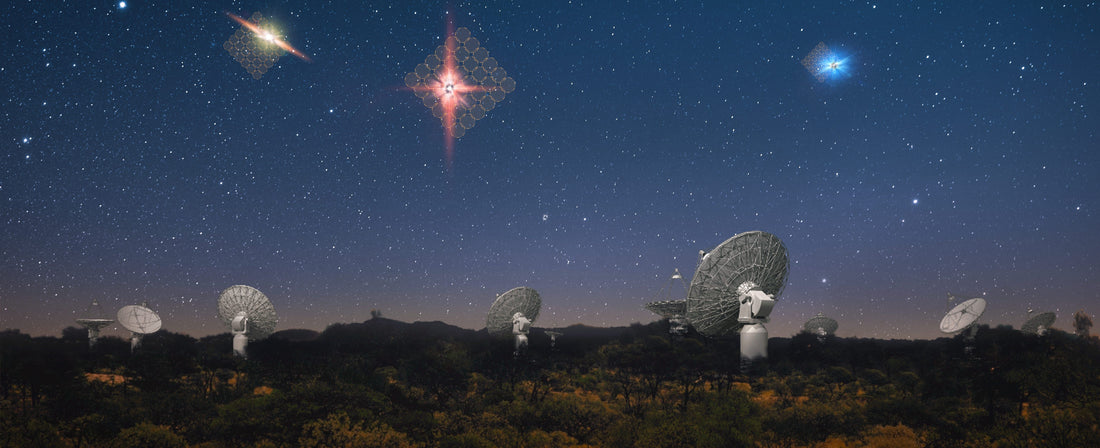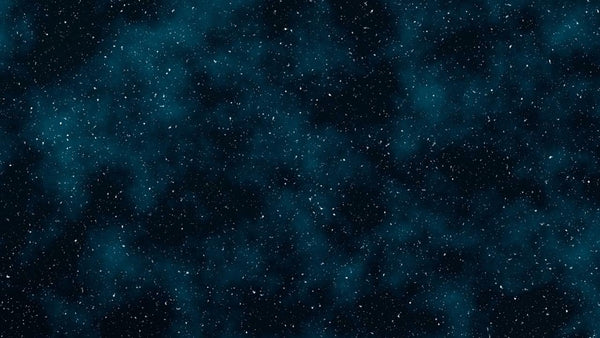
Aussie Astronomers Just Mapped 1,000,000 New Galaxies In 300 Hours
Share
I am, you are, we are incredibly efficient at cartography of the observable universe.
Aussie astronomers from the CSIRO have charted an incredible 83% of the visible universe. Making it a record for the amount of data collected in such a short amount of time.
To be frank about it, Australia just made an atlas of the entire southern sky.
How?
A new sky survey called the Australian Square kilometre Array Pathfinder (ASKAP) that the folks at the CSIRO describe as a "Google map of the universe." In essence, ASKAP is a network of 36 antennas 800km north of Perth in the Western Australian outback.
But not just any antennae. If you're thinking about your Foxtel dish for comparison, stop that. Stop that right now.
Each antenna is three stories high, spread over 4,000 square km, and united they form a single, immensely powerful radio telescope. By combining signals from smaller dishes, the telescope creates high-resolution images at a fraction of the cost of one very large dish, said the CSIRO.

While ASKAP has been a thing since 2012, this was the first time it used all antenna in a single, focussed effort.
Previously, the ASKAP has studied black holes, the nature of gravity and the birthing of new stars in gassy "nurseries". All simultaneously.
“If we can look at the statistics of them, where they are on the sky, and how they interact with each other, then we learn about how galaxies like our own can form and how we came to be here on this Earth,” said Douglas Bock, he CSIRO’s director of astronomy and space science. “And if we look at a galaxy that is far away, perhaps 12 billion light-years away, we are looking back in time. So, we are looking at the light from that galaxy that was emitted when it was only a few billion years after the beginning of our universe.”
By using the full potential of the array, over 3 million galaxies are visible from Australia's unique position in the southern hemisphere. At least 1 million of these galaxies may have never been discovered.
And for the ASKAP network, it appears it is just getting started.

After the success of its maiden focussed peer into the unknown, CSIRO scientists are planning a deeper observation of the sky in the next few years.
"For the first time, ASKAP has flexed its full muscles, building a map of the universe in greater detail than ever before, and at record speed," lead study author David McConnell, a CSIRO astronomer, said in a statement. “This census of the Universe will be used by astronomers around the world to explore the unknown and study everything from star formation to how galaxies and their supermassive black holes evolve and interact. We expect to find tens of millions of new galaxies in future surveys."
Usually., all-sky surveys take months or even years to form a cohesive picture. But the new means using ASKAP only took a few weeks of stargazing. The new approach is so revolutionary that the team has coined it, "Rapid ASKAP Continuum Survey,"
And the "rapid" comes from the 36 receivers' panoramic photography - generated at a faster rate than Australia's entire internet traffic - getting the royal processing treatment from a string of supercomputers at the Pawsey Supercomputing Center.

The end result?
A map that shows 83% of the sky made from 903 separate images containing 70 billion pixels.
Your phone?
Even if it's the latest and greatest will most likely only capture a few hundred million per image.
Every image from the 903 will be made publicly available after analysis and plans are finalised for the next all-sky survey.
“ASKAP is applying the very latest in science and technology to age-old questions about the mysteries of the Universe and equipping astronomers around the world with new breakthroughs to solve their challenges,” says CSIRO Chief Executive Dr Larry Marshall.
Just to whet your anticipation glands a little more, the CSIRO estimate there are as many as 1 trillion galaxies in the known universe.
We can't wait for ASKAP to find them.
Watch it in action below.
Love a bit of space and want to spread ARSE?
Be the hero of your own space adventure and shop now at spaceaustralia.com.au
#Space_Aus2




